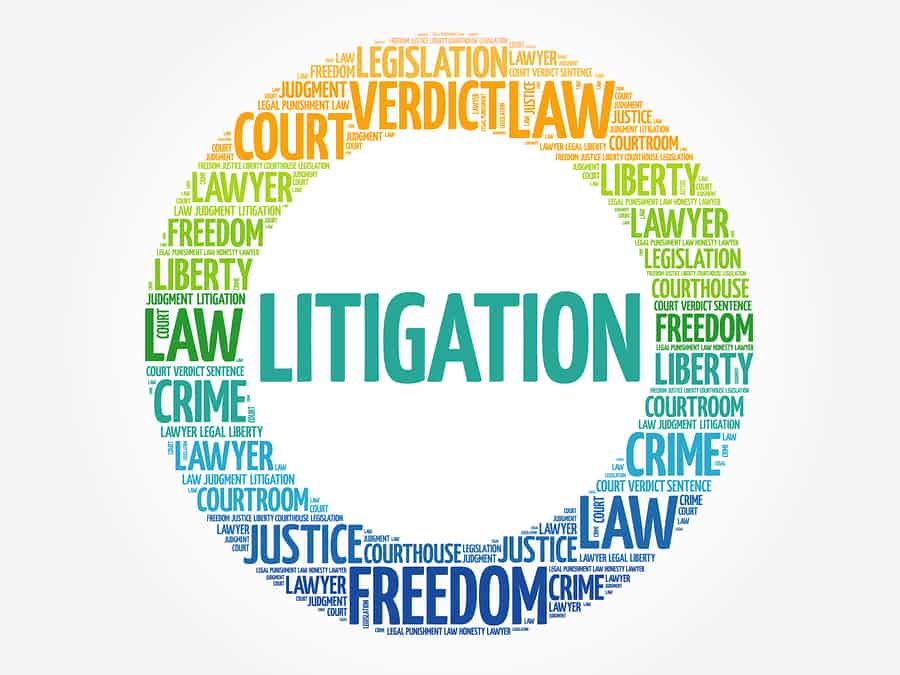What is Litigation and Why is Translation Required for It?
Defining Litigation
When a business, individual, or entity becomes part of a lawsuit, whether they are filing the lawsuit or responding to it, this is called litigation. There is a process that is usually followed by litigation. The first stage is when a complaint is filed and when there is a response to a complaint. The next stage is called pleading, followed by the discovery and then a settlement conference. The litigation could end up as a trial if no settlement is reached. If the trial does not favour one of the parties, an appeal of the decision may be able to be lodged.
If the process involves speakers of different languages, the importance of litigation translation cannot be ignored as an interpreter for each language will be required when oral communication between the parties takes place. All of the documents used, such as the complaint and response documents, any written evidence, witnesses statements, and lawyer’s comments will all need translations performed by a legal document translator from a reliable litigation translation service.
Terms That May Need a Legal Translation in the Litigation Process
One of the key components of a successful and accurate litigation translation is the knowledge the legal translator from the litigation translation services has of litigation terms. These are legal terms that are unique to the litigation process.
Summary of litigation terms
The plaintiff
The plaintiff is the party who files with the court what is referred to as a complaint document. This contains names of the parties on both sides who are involved in the dispute, briefly provides the facts of the dispute, and specifies the damage that has been caused by the act or omission of the other party, referred to as the “defendant.” The plaintiff needs to give a copy of the complaint to both the court and the defendant. This will need to be translated into the languages of the plaintiff and defendant by an experienced litigation translation service.
The defendant
The defendant is required to provide an answer to the complaint.
Pleadings
“Pleadings” is the legal terminology that includes all the legal written documents filed to the court, or to the defendant during litigation. The complaint is regarded as the first pleading in a lawsuit, while the answer is the 2nd pleading. Other documents which are considered pleadings include motions, petitions, request for hearings, and other relevant documents. These will need legal document translations too.
Discovery
This usually takes the longest time in the litigation process, because this is when each party provides relevant evidence, facts, and documents for the case. This fact-gathering takes place through written, formal questions referred to as interrogatories that have to be presented by fixed deadlines.
Settlement conference
At the settlement conference, the importance of litigation translation cannot be overemphasized as this is when the involved parties and/or their lawyers meet up with the aim of resolving some or, if possible, all of the concerns in the litigation. A settlement conference is particularly useful in family law and domestic disputes, for example, to do with child custody and visitation rights when emotions may be running high. An accurate litigation translation needs to take place by a skilled translator from litigation translation services.
The trial
The trial is a last resort in the litigation process. There could be a jury involved or just a judge. A trial brief takes place first so the court knows that all parties are prepared to go to trial. This will have to be submitted in the language of the court. At trial, the plaintiff takes the lead and has the opportunity to prove the case by presenting witnesses’ statements and evidence. The defendant follows. Each party then has to give a closing argument in a simple statement. This may require an interpreter if one of the parties cannot speak the court’s language. The judge will give his/her instructions to the jury about the way the law should be applied to the case. The jury then retreats to the conference room to discuss and come to a verdict. If it is a bench trial, the judge will retire to his/her chambers to ponder the evidence before a verdict is arrived at.
Conclusion
A skilled litigation translator will have a vast amount of experience performing litigation translations and will have full knowledge of how to translate all the litigation terms accurately. In the U.S. most state courts require that litigation interpreters have passed a test offered by the court or another accredited agency like the National Association of Judiciary Interpreters and Translators. In Australia, the National Authority for Translators and Interpreters (NAATI) is the national body that provides accreditation for both litigation interpreters and translators. It is important that when hiring a litigation translator from a litigation translation service that the one has chosen the credentials and experience to undertake accurate litigation translations.



